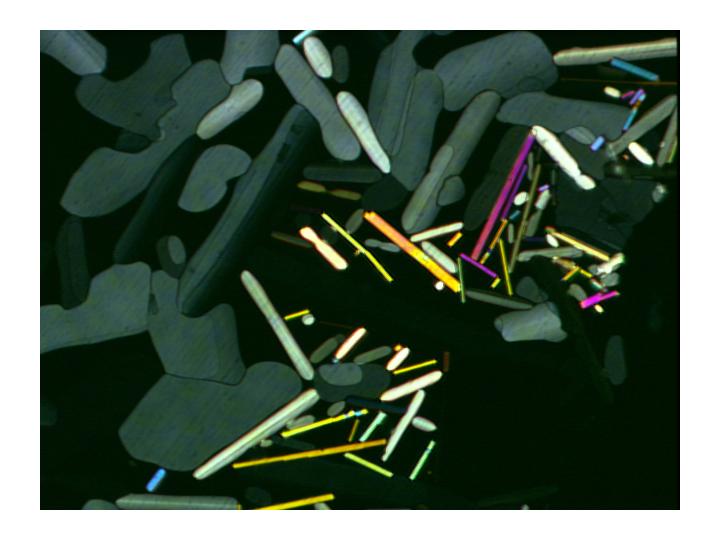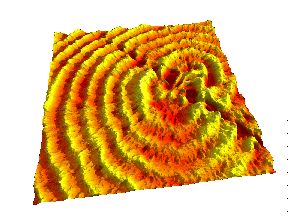Research Themes in my lab:
Much of the research in my group is focused on the broad area of soft condensed-matter physics.
Soft materials are materials in which "the thermal fluctuations that dominate the fluid state
coexist with the stringent constraints characteristic of the solid state" [Witten,
Reviews of Modern Physics 71, S367 (1999)]. Well known examples include polymers,
in which subunits are joined covalently to form a flexible chain, and liquid crystals, which exhibit
some, but not all, of the ordering seen in solid crystals. In order to understand the structure of
such materials, we employ atomic force microscopy, video microscopy, and small-angle neutron scattering.
If you would like to learn more about our work, please explore some of the specific projects listed below...
Current Projects:
Alkane Crystallization
One thing we study is the crystallization of normal alkanes - paraffin wax. Although this might seem
mundane at first glance, there are several reasons to study this system.
More info ...
Adhesive and Mechanical Properties of Cells
Through a collaboration with research groups in Biomedical Engineering and the Medical Sciences, we are
performing atomic-force microscopy studies of biological cells in order to better understand their structure,
mechanical properties, and adhesive properties.
More info...
PVA Hydrogels
Hydrogels are another class of soft material we are investigating. Hydrogels are typically comprised of a
sparse network of cross-linked polymers imbedded in a fluid matrix - one well-known example is Jello.
More info...
Mechanical Properties of Nanomaterials
The ability of the AFM to measure forces at the pico-Newton scale with nanometer lateral resolution is well
suited to the study of nanomaterials such as carbon nanotubes.
More info...
Atomic Force Microscopy Techniques
One of the primary experimental instruments employed in my research is the atomic force microscope (AFM),
which can measure structures and forces at the nanometer and pico-Newton levels. Still only 20 years old,
development of new AFM techniques continues.
More info...
An important application of the atomic force microscope is in quantitative force measurements, a
prerequisite of which is accurate knowledge of the cantilever spring constant. Although several calibration
methods have been described in the literature, one must often wade through numerous publications in order to
track down all of the details. Here, we briefly review three popular methods and single out one — the
thermal noise method — for a detailed description.
More info...
Main Experimental Techniques
Optical Microscopy
Although an old technique, advances in microscopic techniques,
such as phase constrast and differential interference contrast,
have maintained the usefulness of this tool. An
excellent primer is available on-line.
|

|
Wax crystals seen through a
polarizing optical microscope
|
| | | |

|
Scanning-Probe Microscopies
A much more modern microscopic method, scanning-probe microscopes
allow nanometer-scale measurements of properties such as:
- topography and adhesion forces - atomic-force microscopy (AFM)
- electron density - scanning tunneling microscopy (STM)
- frictional forces - lateral-force microscopy (LFM)
For an on-line introduction to these instruments, try:
|
AFM map of the centre of a
spherulitic multicrystalline domain
|
Back to my Home Page
Last updated July 16, 2005

